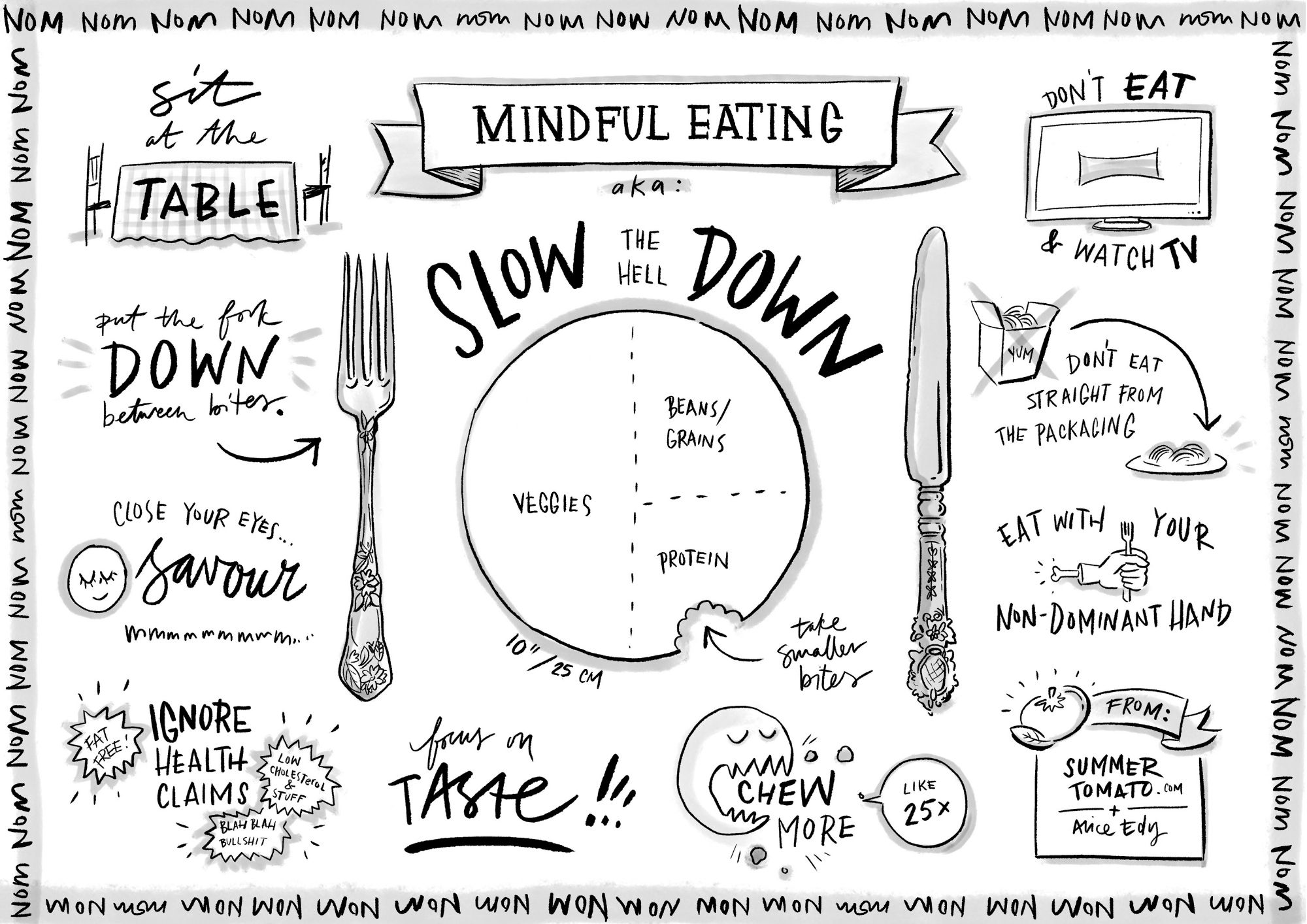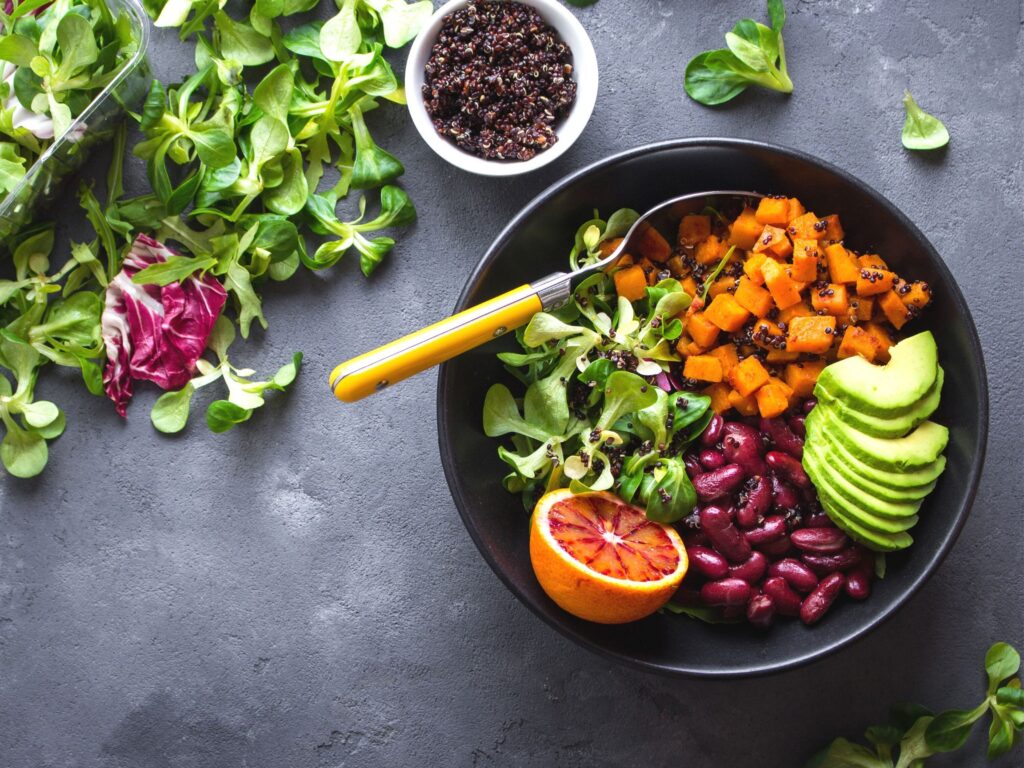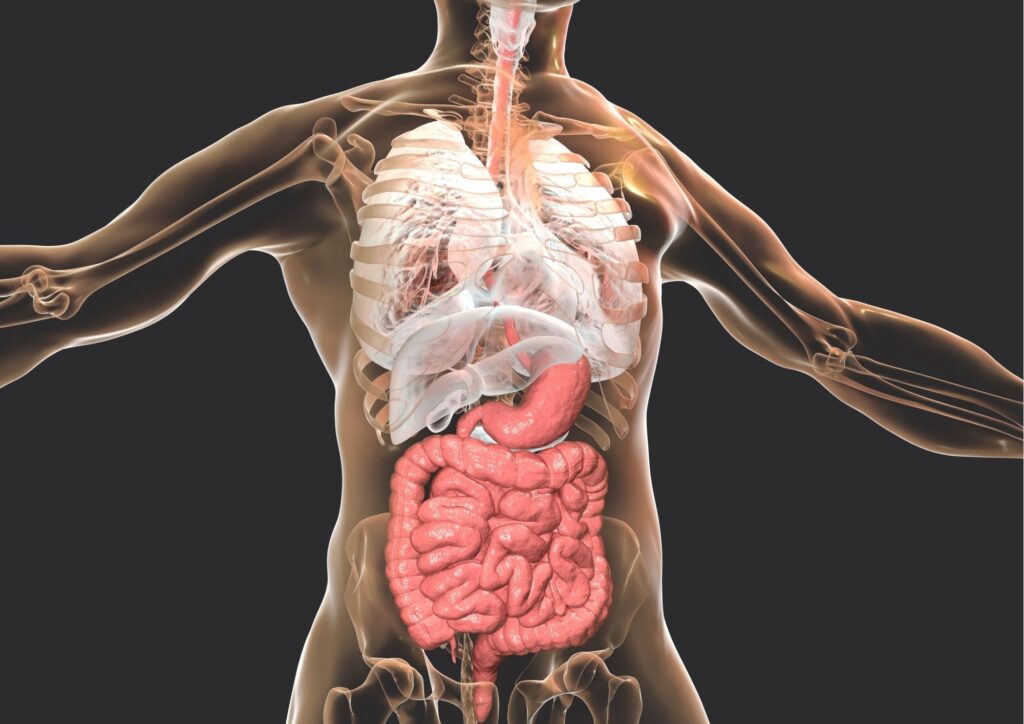Mindfulness means the art of bringing your awareness into the present moment. Therefore mindful eating means the art of being present while you eat and drink. Without distractions, judgment, and truly connected with your body, cravings, and fullness. Ideally, you’re slowing your pace and you eat in a relaxed environment.
Mindful eating is a not a diet
Mindful eating is not a new diet to make you lose weight overnight. There’s no list of forbidden foods and no counting calories involved. Do I hear an amen?! On the contrary, mindful eating is here to stay and it’s doing just one thing: heal your relationship with food.
Did you know that we absorb more nutrients from our meals when we’re mindful? Therefore, check-in on your self the next time you’re eating and ask yourself the following questions are helpful. For instance, ask yourself whether you feel stressed or anxious? Or are you excited about that red velvet pie in front of you? Maybe, you feel guilty about that big mountain of rice? Are you present? Moreover, the ultimate goal is to eat in a calm state, mindfully, and with pleasure.
The Mindful Eating Cycle
In addition, use these helpful questions too the next time before you eat:
- Why? Why do I eat?
- When? When do I want to eat?
- What? What do I want to eat?
- How? How do I eat?
- How Much? How much do I eat?
- Where? Where do I invest my energy?
Asking yourself these questions helps you recognize any “unhealthy” eating cycles and replace them with mindful practices. This can eventually heal your relationship with food and as a result, you become a healthier and happier version of yourself. Isn’t that what we all want? And weight loss is a happy by-product when eating mindfully. Pinky promise!
10 Science-Backed Mindful Eating Exercises
Follow these methods to become a mindful eater:
1. Pick a smaller plate
Be mindful of the portions to ensure you’re enjoying quality, not quantity. A full plate looks and feels more satisfying, so when you use a smaller plate and fill that up, you thin you’re eating a lot and as a result, will feel full. On the contrary, when you eat from a larger plate, you will fill up that plate too, and unconsciously eating too much without noticing. Serve a reasonable portion instead and don’t eat straight from the pan, potato chips bag, or takeout box.
2. Sit down to eat
Plate up your food, then take a seat. Don’t eat while you’re standing, running around, or driving. Put away your phone, laptop, any tech devices with a screen! They’re distractions, am I right? Without Whatsapp notifications, you’ll feel much more connected to your food. Take time to eat, rather than just doing it while multi-tasking.
3. Practice gratitude
Give thanks for your food, or take a deep breath before each meal. This forces you to stop, relax, and slow down before you eat. It also helps to reduce anxiety around food and helps your body to digest food better. We’re so lucky to have access to healthy nourishing food. Be grateful for this meal.
4. Reflect on how you feel before you eat
Are you hungry or are you bored? Don’t turn to food when all you want is a hug from a loved one. Food can’t solve your problems. I know you know this already, just reminding you that in order to eat mindfully you have to go to the root cause of emotional eating.
5. Chew, chew, chew
Aim for 30-40 chews with each mouthful. I know it’s hard, especially when you’re like me, who shoves food in their mouth at a pace like a saber tooth tiger is chasing you in the wild. Blame it to our ancestors who had to do this to survive back in the days.
6. Put your fork down between each bite
Your food isn’t running away off the plate. Seriously it’s not. There’s no rush, that saber tooth tiger ain’t coming. Put down your fork or spoon between each bite and don’t pick them up again until you’ve already swallowed the bite you took last is an art on its own.
7. Quit counting calories
Count nutrients instead. This is a more balanced, wholesome way of eating that includes all the food groups. An example of a balanced plate that doesn’t need calorie counting is to make sure to fill your plate 1/4 with whole grains (brown rice, sweet potatoes or quinoa), 1/4 high-quality protein (tempe, tahu, legumes) and 1/2 with low starchy vegetables such as spinach, kale, paprika, zucchini, broccoli, and mushrooms. If you don’t have whole grains or protein at a meal, don’t stress, just fill up your plate half with non-starchy veggies and the other half with whole grains such as rice or pick a protein of choice. You don’t always have to eat both (grains and protein) at every meal.
8. Wait 15 minutes
Wait 15 minutes after eating to decide if you’re still hungry for seconds. You see, it takes about 15 minutes for your brain to know if you’re full or not. Be mindful of how hungry you are to make sure you’re only eating when you’re hungry. Another tip is to eat smaller portions throughout the day before you get too hungry and start bingeing.
9. Remove all negative thoughts around food.
We’ve got to stop labeling food as good and bad. Healthy and unhealthy. You’ve learned to think this way because of the diet culture. Besides, feeling guilty about food gives us physical and emotional stress and this can cause some serious mental health issues too.
10. Positive affirmations.
Say positive affirmations before you eat or at each meal. Try these ones: “This food is going to nourish and energize my body.” “I trust my body knows how to digest and metabolize this food.”
Read more about positive affirmations and positive body image here.
Connect With Food
At last, connect with how food makes you feel. Eat foods that energize you, and avoid eating foods that make you feel unwell/bloated/tired. Focus on wholesome real ingredients. Moreover, stop with the “all or nothing” approach. If you choose fast-food after a long working day, forgive yourself, move on, and make a healthier choice at your next meal. Don’t write the day off, trust that your body can handle it. Learn to trust your food voice and instinct, it’s here to guide and support you no matter what. I’m cheering you on!



